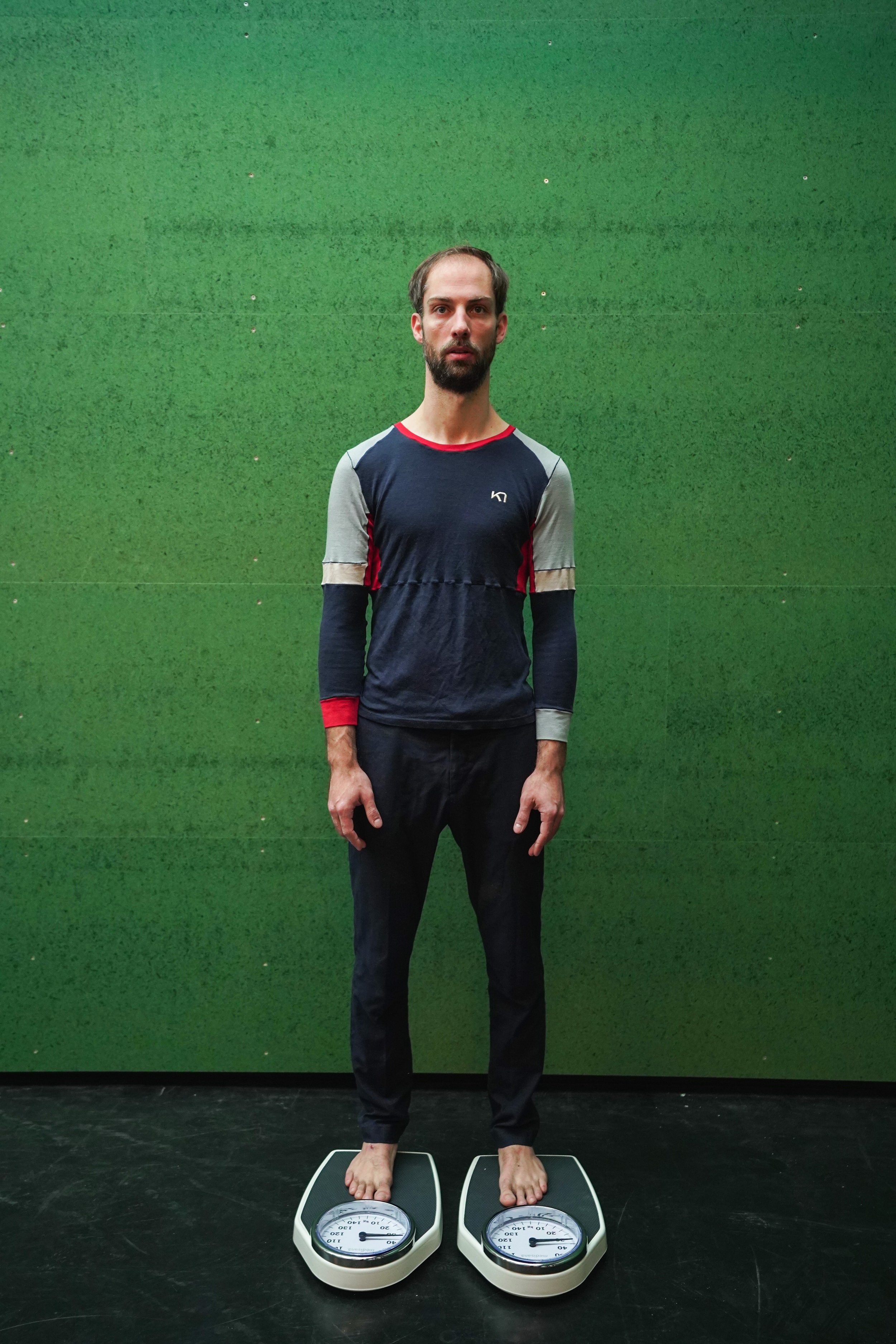
The Cabinet
Podoscopes
Anyone who wears orthotics has probably already paid a visit to a podiatrist or orthopaedic surgeon. Using a foot mirror – a podoscope – the doctor looks at the total pressure surface of the soles of your feet. In order to improve your posture, cork elements, which have an immediate effect on your muscles, are placed at certain points under the sole of your foot during this test. Orthotics are custom-made, for example, given that the left and right foot often differ from each other. Undergoing such a test is quite a unique experience, because how often do you actually see the bottom of your own feet? Some podoscopes have measurement markings, which quickly make it clear that your feet may not be as symmetrical as you thought.
Balance
The ingenious work of art by choreographer William Forsythe, ‘Towards the Diagnostic Gaze’, invites the viewer to hold a feather duster absolutely still. As you can imagine, that is not possible because we always have a certain tone or vibration. In fact, we are in constant motion. Legendary dancer and choreographer Steve Paxton calls this baseline of minuscule movement ‘The Small Dance’ and discusses it most inspiringly in his book ‘Gravity’.
The Cabinet was created within the context of Through the Grapevine.
Images: Olympe Tits
Text: Annelies Van Assche
A podoscope shows that your feet may not be as symmetrical as you thought.
Gait and motion analysis
During a gait and motion analysis, also called a biomechanical motion analysis, your movement pattern is analysed. The pressure distribution under each foot segment is studied while standing still, walking and running. On a wide walking plate with sensors, your dynamic foot rollover is also measured in different gait phases. Not only is this information used to help you choose the right running shoes, but the technology is also gradually progressively evolving to apply this knowledge for surveillance purposes. The more information that is collected about the different ways humans walk, the more accurately this recognition technology can be used to signal alarming behaviour at airports, for example. If you walk around the airport too often, for instance, you become suspicious. Moreover, in the (not-too-distant) future, your unique way of walking could be linked to your passport, so that flagged criminals can be found faster based on their way of walking. The difference between people born as women and people born as men can, for example, be easily recognised by the person’s way of walking: people born as women have more space at the hips so that they can give birth to a child.
Is your weight equally divide? Does it stay stable?



